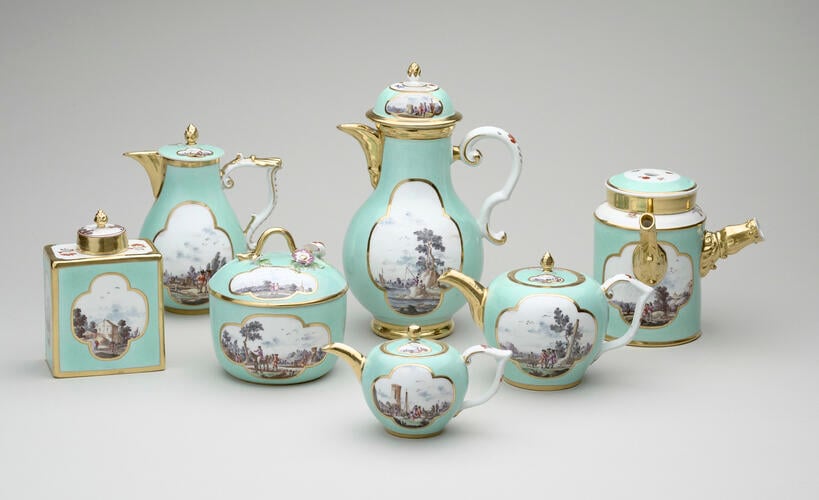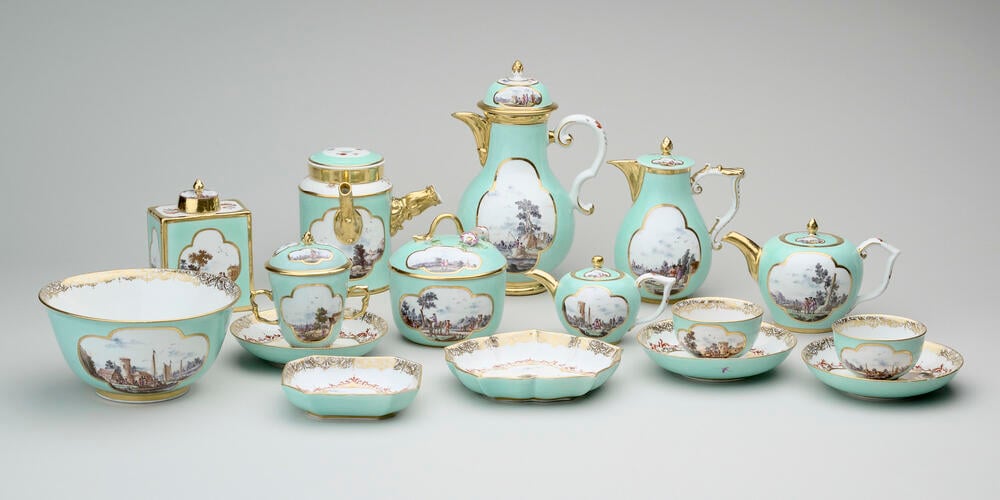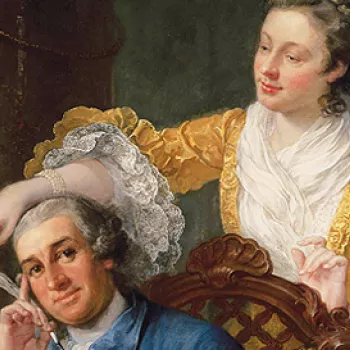Dish 1720-30
Hard-paste porcelain | 2.7 x 11.0 x 11.0 cm (whole object) | RCIN 39817
-
A hard-paste porcelain square dish with canted corners. It is decorated with a pale turquoise ground on the outside and with a white ground on the inside. In the centre of the inside is a quatrefoil reserve painted with a polychrome harbour scene. The edge of the reserve and the inside rim of the dish are finished with an arabesque/trellis border in gilt.
As the Meissen factory grew the artists began to turn not only to Chinese precedents but to introduce European motifs of decoration – landscape and harbour scenes derived from seventeenth-century French and Dutch paintings, European flowers and hunting and genre scenes became more common. This service combines European scenes with a delicate turquoise-green ground which may have been intended to resemble Chinese celadon porcelain in its hue.
Queen Caroline led the way in the acquisition of German and Chinese porcelains but Meissen porcelain was also mentioned in the accounts of Princess Augusta. In 1755, for example, a bill was charged by John Taylor, a china and glass dealer on Pall Mall, for packing and transporting Dresden china to Kew Palace.
Text adapted from The First Georgians; Art and Monarchy 1714 – 1760, London, 2014.Provenance
Part of a similarly decorated part tea and chocolate service first recorded in the Royal Collection in 1872.
-
Creator(s)
(porcelain manufacturer) -
Medium and techniques
Hard-paste porcelain
Measurements
2.7 x 11.0 x 11.0 cm (whole object)
Place of Production
Saxony [Germany]










